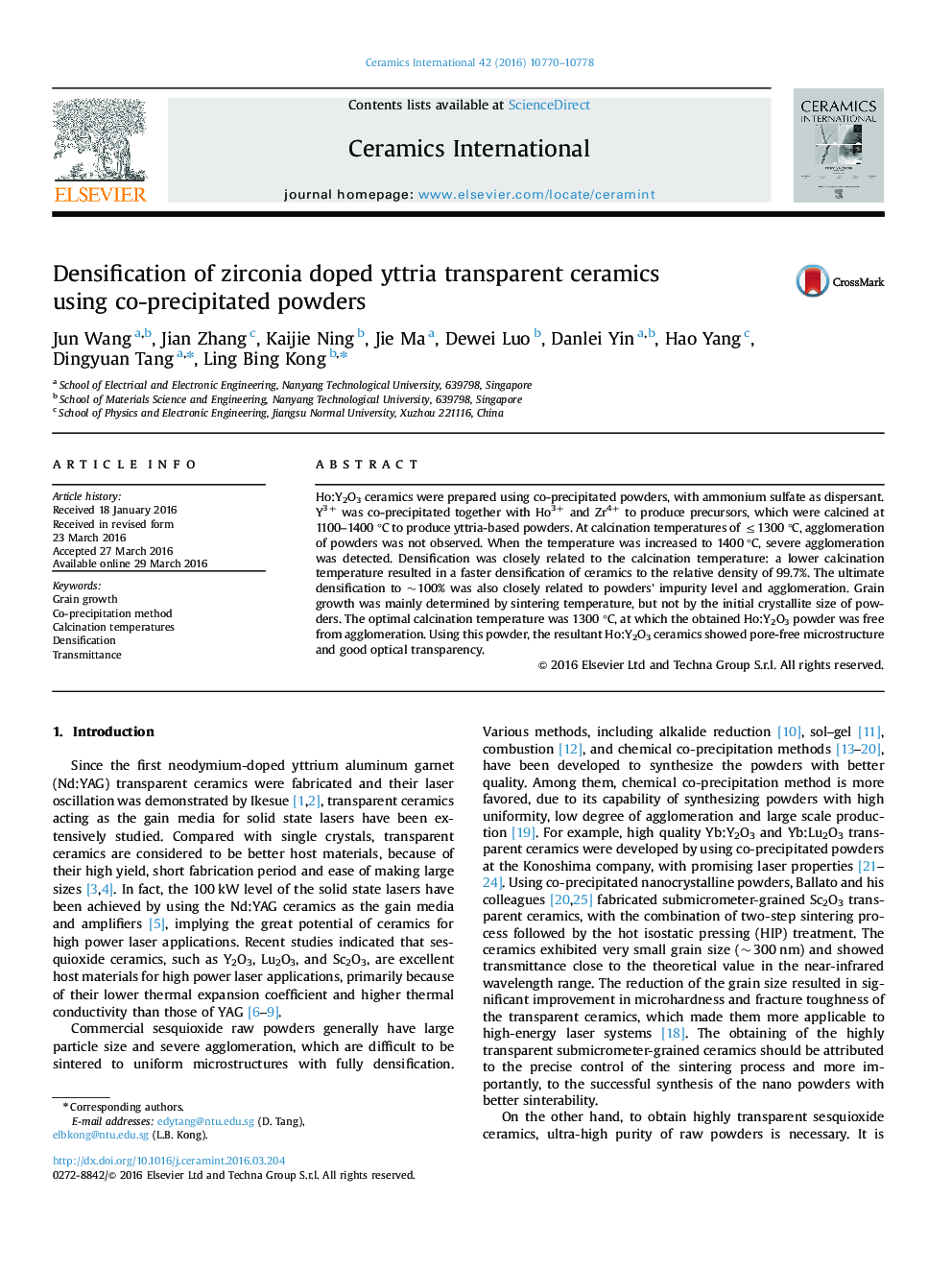| Article ID | Journal | Published Year | Pages | File Type |
|---|---|---|---|---|
| 1458620 | Ceramics International | 2016 | 9 Pages |
Ho:Y2O3 ceramics were prepared using co-precipitated powders, with ammonium sulfate as dispersant. Y3+ was co-precipitated together with Ho3+ and Zr4+ to produce precursors, which were calcined at 1100–1400 °C to produce yttria-based powders. At calcination temperatures of ≤1300 °C, agglomeration of powders was not observed. When the temperature was increased to 1400 °C, severe agglomeration was detected. Densification was closely related to the calcination temperature: a lower calcination temperature resulted in a faster densification of ceramics to the relative density of 99.7%. The ultimate densification to ~100% was also closely related to powders' impurity level and agglomeration. Grain growth was mainly determined by sintering temperature, but not by the initial crystallite size of powders. The optimal calcination temperature was 1300 °C, at which the obtained Ho:Y2O3 powder was free from agglomeration. Using this powder, the resultant Ho:Y2O3 ceramics showed pore-free microstructure and good optical transparency.
